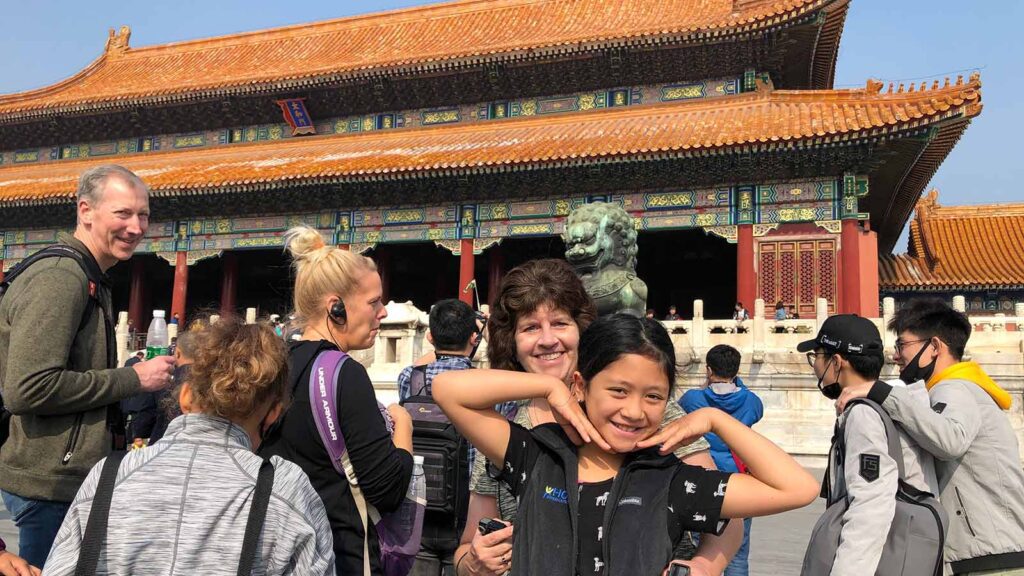20 Handy Suggestions For Choosing China Tour Sites
Wiki Article
Top 10 Tips To Shop In China: Regional Particularties
1. Research Before you goTip Know what each region can offer. Suzhou, Jingdezhen and Tibet are all known for their distinct items.
Pro: You can focus your energy on shopping and cut down time.
Pros: It needs some preparation and knowledge of local landmarks.
2. The authenticity is guaranteed by purchasing local
Buy directly from the place of origin in order to ensure quality and authenticity.
Pro: Reduces the chance of copyright goods and supports local artisans.
Con: Needs to travel into rural areas or less popular tourist destinations.
3. Visit an artist or workshop
Instead of shopping in generic stores, search for small workshops and hubs of artisans.
Pro: This will allow you a deeper appreciation of the artwork and allows you to purchase directly from the artists.
Pros: Some handcrafted products are more expensive and harder to sell.
4. Find out about the significance of culture
Discover the history of items such as cloisonne or jade carvings.
Pros: You will be able to enjoy your purchases more, and they will have a a deeper meaning.
Con: It might take a while to fully understand cultural differences.
5. Check for Quality
Tip: Examine the craftsmanship of items such as tea, embroidery, or ceramics to ensure they meet your standards.
Pro: Reduces the chance of disappointment by ensuring that you receive what you have paid for.
Pro: It takes knowledge or experience to locate the best quality products.
6. Beware of mass produced goods
It is important to look for products made by hand instead of mass-produced replicas.
Pro: You will keep an exclusive and valuable keepsake.
Con: It's more difficult and expensive to find genuine craftsmanship.
7. Compare Prices
Tips: Compare prices from multiple shops or stalls for the identical item.
Pro: Helps you identify reasonable price ranges and avoid being overcharged.
Con: Time-consuming in big markets, particularly.
8. Purchase tea from a trusted vendor
Tip A tip: If you live located in an area such as Hangzhou, Fujian or Longjing Tea (Dragon Well), or Tieguanyin Tea, make sure to visit tea houses that sell these teas.
Pro: Ensures authenticity and quality.
Con: It is difficult for newcomers to determine the quality of tea.
9. Learn about Local Customs
Tips: In certain regions sellers may require you to negotiate, or view haggling as part of the experience.
Pro: Adds an enjoyable cultural dimension to shopping.
Misunderstanding the customs system can create uncomfortable interactions.
10. Pack Wisely
Prepare for the transport of fragile and bulky objects like silk, ceramics, or other regional specialties.
Pro: It protects the items and ensures that they arrive in good order.
Cons: Additional logistical concerns and potential shipping costs.
Pros of Shopping for Regional Specialties
Specialty Souvenirs that are Unique - Local products are distinctive and cannot be found elsewhere.
Cultural Immersion. Buying local specialties will connect you to the area's history and craftsmanship.
Direct purchases made from artisans helps local economies.
The cons of shopping regional specialties
Concerns about authenticity include the possibility of purchasing counterfeits, or versions which are less reputable.
Transporting heavy or fragile items can be a challenge.
More expensive: Real regional goods can be expensive Particularly handcrafted products.
You can get the most of your shopping trip in China by following these simple guidelines. Follow the top learn more about visiting here for website info including shopping in nanjing, chinese stone lion the common ornament in chinese traditional architecture, guanlin temple, ganden temple, lion forest garden suzhou classical garden, south luogu laneone of the oldest neighborhoods in beijing, temple of confucius one of the three largest ancient architectural complexes, shopping in kashgar, eating in guilin, guanlin temple and more.

Top 10 Tips For Dining Etiquette And The Manners Of China
1. Wait to be Seated Tip If you are dining in a formal setting you should wait for the host or server to direct you to your seat because seating arrangements typically are a reflection of an orderly manner of life.
Pro: Respects the authority of the host and cultural customs.
Con: Casual settings may cause confusion because it is not always clear who the person who is hosting the event is.
2. Chopsticks: How to Use They Correctly
Do not place chopsticks vertically into rice. It's like an unsettling funeral ritual. Make use of chopstick holders, or put them flat on top of the bowl or plate when not being used.
Pro: Stops disrespectful behavior that is not intentional.
Con: Learning proper chopstick etiquette might take practice for beginners.
3. Respect for the Elders
The person who is more or older senior start eating first. They are often served first.
Pro: Maintains the values of family and social hierarchy.
Con: This tradition could be overlooked or unneeded in informal situations.
4. Share Dishes
Chinese eating is a communal affair. Dishes will be placed in the center for everyone to enjoy. Do not eat the last meal unless you're offered it.
Pro: It encourages a feeling of community and shared experiences.
Con: If you're someone with an insufficient taste, sharing food could limit the options available to you.
5. Avoid Wasting Food
You should limit yourself to what you can eat. It could be wasteful to leave food unattended on your plate.
Pro A way to show your appreciation to the host.
Con: Underestimating the size of your appetite could cause you to be unable to finish your meal.
6. Toast the right way
If you're toasting someone, it is appropriate to place your glass slightly higher than a senior or respected individual.
Pro: Demonstrates politeness.
Con: It's sometimes difficult to remember when there are many toasts.
7. Don't flip fish
Tip For south China, flipping fish after eating one side is bad luck. This is a sign of the capsized ship.
Pro: It is crucial to stay clear of causing offence to local beliefs.
Contra: This custom might not be applicable in northern China and can lead to different practices.
8. Slurping and Burping Are Okay
Tip: Slurping noodles or soup is often considered to be a sign of appreciation and not rudeness. It is often regarded as an honor to the chef.
Pro: It encourages you to relax and take pleasure in the meal.
Con: This may cause you to question your own customs and values, making it feel awkward.
9. Chopsticks shouldn't be pointed at by people
Only use chopsticks to eat with. Only use chopsticks for eating.
Pro: Provides a friendly dining environment.
Con: It is easy to overlook this principle during lively discussions.
10. Pay Attention to Who pays the Bill
In China the custom is for the host to insist that the guest pays the amount. It is possible to offer, however you may encounter resistance.
Pro: Shows appreciation for generosity.
Con: If you insist on something too much can seem unsincere.
Be a good observer of Chinese Dining Etiquette to reap the benefits.
Respect for Cultural Values: Following traditions fosters respect for locals.
Social Bonding : Being a part of a tradition creates a feeling of belonging and appreciation.
Avoids Missteps: Proper etiquette helps you navigate unfamiliar dining situations smoothly.
A true experience: Taking part in traditional customs can enrich your experience.
Pros and Cons of Following China Dining Etiquette
Complex Rules: The abundance of customs could be overwhelming for newcomers.
Regional Variations: Etiquette norms can differ between regions, causing potential confusion.
It is time-consuming to keep up with formalities. This can cause delays in the start of a dinner.
Unfamiliar Gestures: Certain practices like correctly using chopsticks requires practice and effort.
You can navigate Chinese Dining Etiquette with ease by following these suggestions. This will ensure an enjoyable and pleasant experience for both you and your hosts. Take a look at the top check out top attractions in this area for more advice including eating in fuzhou, a wonderful landscape painting lijiang river, shaoxing wine the best yellow wine in china, hua diao the most famous shaoxing yellow wine, eating in taiyuan, lion forest garden suzhou classical garden, shopping in harbin, chaka salt lake, the origin and history of the mysterious chinese dragon, chinaexpeditiontours.comattractions and more.
